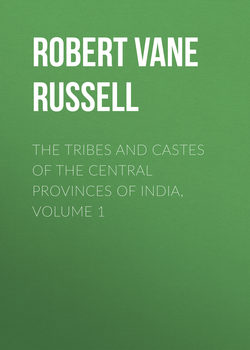Читать книгу The Tribes and Castes of the Central Provinces of India, Volume 1 - Robert Vane Russell - Страница 27
Part I.
Introductory Essay on Caste
Introductory Essay on Caste
24. The cultivating status that of the Vaishya
ОглавлениеThe suggested conclusion from the above argument is that the main body of the Aryan immigrants, that is the Vaishyas, settled down in villages by exogamous clans or septs. The cultivators of each village believed themselves to be kinsmen descended from a common ancestor, and also to be akin to the god of the village lands from which they drew their sustenance. Hence their order had an equal right to cultivate the village land and their children to inherit it, though they did not conceive of the idea of ownership of land in the sense in which we understand this phrase.
The original status of the Vaishya, or a full member of the Aryan community who could join in sacrifices and employ Brāhmans to perform them, was gradually transferred to the cultivating member of the village communities. In process of time, as land was the chief source of wealth, and was also regarded as sacred, the old status became attached to castes or groups of persons who obtained or held land irrespective of their origin, and these are what are now called the good cultivating castes. They have now practically the same status, though, as has been seen, they were originally of most diverse origin, including bands of robbers and freebooters, cattle-lifters, non-Aryan tribes, and sections of any castes which managed to get possession of an appreciable quantity of land.
